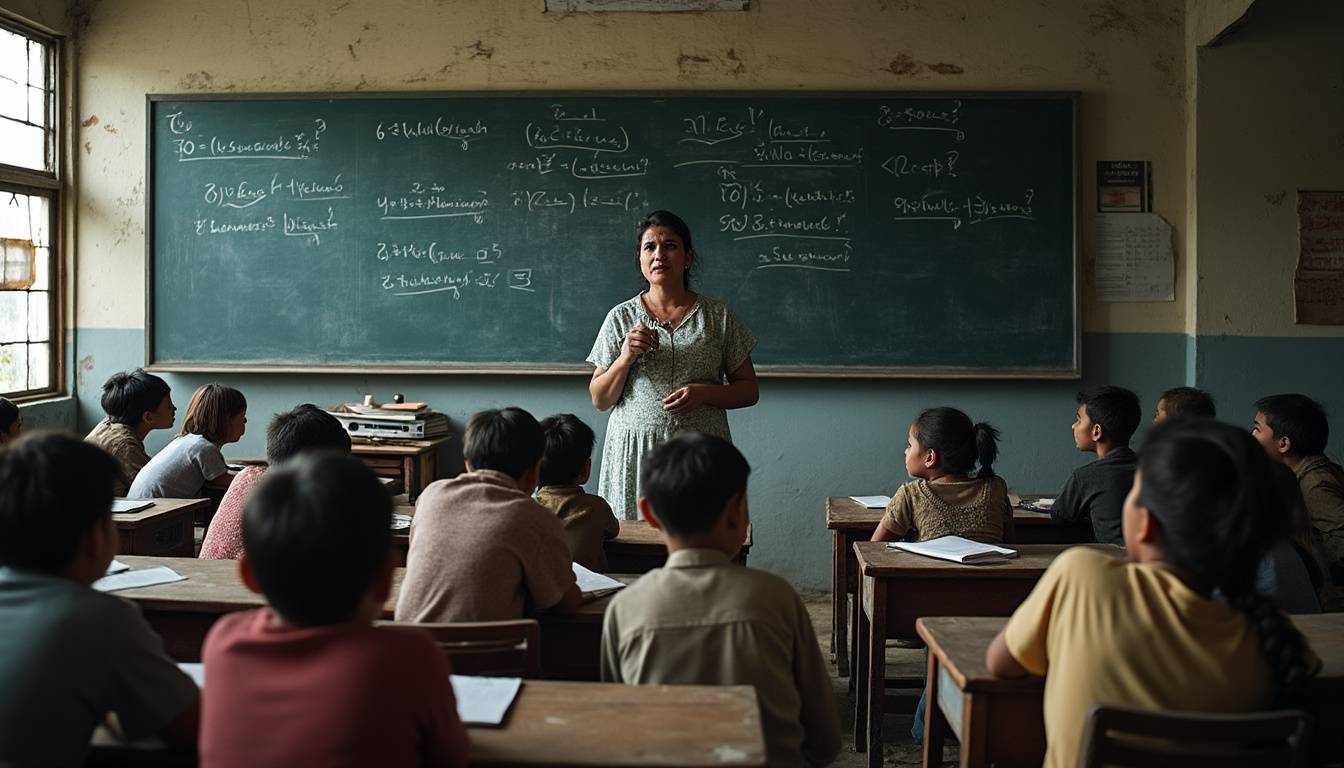Facing an unprecedented challenge, global education systems are bracing for a severe funding shortfall that could deprive 6 million additional children of schooling by 2026. This alarming trend, highlighted by the latest UNICEF report, underscores a growing crisis where financial constraints threaten to derail the academic paths of millions, especially vulnerable populations in humanitarian settings. As educational aid experiences a steep decline, the world confronts not only a loss in student numbers but also the deeper consequences on communities and future generations.
Critical reduction in global education funding jeopardizes millions of children’s schooling by 2026
The technical and financial backbone supporting millions of students worldwide is weakening. Official Development Assistance (ODA) earmarked for education is expected to drop by 24% compared to 2023, amounting to a staggering $3.2 billion USD decrease. This drop threatens overall enrollment, pushing the global out-of-school population from 272 million to approximately 278 million children—a figure equivalent to emptying every primary school in both Germany and Italy combined.
UNICEF’s Executive Director, Catherine Russell, emphasizes that these cuts translate into harsher realities for children: “Each dollar cut puts a child’s future at risk.” She stresses the crucial role of education not just as a tool for knowledge but as a vital lifeline in emergencies, providing access to healthcare, protection, and nourishment. Education thus remains a powerful avenue to break poverty cycles and create better futures.
- Expected global reduction in educational funding: 24%
- Additional children at risk of dropping out: 6 million
- Projected rise in out-of-school children: from 272 to 278 million
- Economic lifetime loss per child due to disrupted primary education: estimated at $164 billion overall
Regions most vulnerable to education funding cuts by 2026
The impact will not be uniformly felt. West and Central Africa face the most severe consequences, with almost 2 million children at risk of losing access to education. The Middle East and North Africa region follow closely, with anticipated increases of approximately 1.4 million out-of-school children. Compounding this crisis, 28 countries are projected to lose over a quarter of their education funding essential for preschool, primary, and secondary schooling. Countries such as Côte d’Ivoire and Mali could see enrollment rates fall by up to 4%.
- Top affected regions: West and Central Africa, Middle East, North Africa
- Number of countries losing ≥25% educational support: 28
- Primary education most impacted globally
- Estimate of affected children risking school dropout in humanitarian contexts: one-third of 6 million
Beyond academics: education as a vital support system during crises
For children living amid humanitarian emergencies — whether due to conflict, displacement, or natural disasters — education transcends traditional schooling. It is a vital source of stability, normality, and protection. Approximately 10% cuts are projected in educational services in crisis-affected areas. For example, in the Rohingya refugee camps, 350,000 children face losing access to basic education if funding does not stabilize.
UNICEF warns that without urgent financial intervention, essential education centers might close, exposing children to exploitation, trafficking, and child labor. Moreover, vital school programs like meal provision could see budgets slashed by over 50%, while funding dedicated to girls’ education is also at risk of dramatic reduction. This cascade of cuts threatens the broader ecosystem that supports children’s learning and wellbeing.
- Education centers in humanitarian settings risk closures
- Cutbacks in school meal programs of more than 50%
- Significant drops in budgets supporting girls’ education
- Compromised government capacity for educational planning and teacher development
Collaborative efforts to protect children’s education amid funding crises
International organizations including UNICEF, Save the Children, World Vision, Education Cannot Wait, Global Partnership for Education, Room to Read, Plan International, CARE International, Children International, and SOS Children’s Villages, are reinforcing calls for immediate concerted action from donor countries and partners to reverse the downward funding trend. Priorities include:
- Rebalancing educational aid allocations
- Protecting and sustaining humanitarian education financing
- Supporting innovative community partnerships to maximize resources
- Enhancing data-driven educational planning and monitoring
Such efforts are indispensable in safeguarding the futures of at-risk children in diverse contexts, from conflict zones to marginalized rural areas, as highlighted in recent analyses on child advocacy in education and the impact of community partnerships.
Beyond emergency settings, education stakeholders highlight broader societal concerns, echoing challenges like environmental impacts on school infrastructure and migrant children’s educational access. Holistic approaches are urgent to ensure no child is left behind amid the shifting educational landscape.
What can be done to mitigate the educational crisis?
- Mobilize targeted funding toward the most vulnerable populations
- Increase awareness about the critical role education plays in stability and development
- Encourage multi-sector collaboration between governments, NGOs, and communities
- Embrace innovative educational technologies and pedagogies, such as gamification (explore gamification strategies)
These strategies highlight the imperative to champion education as a non-negotiable global priority. Safeguarding education now translates into protecting the wellbeing and potential of millions of children, ensuring they remain on a path toward a more equitable and prosperous future.


